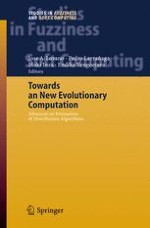Estimation of Distribution Algorithms (EDAs) are a set of algorithms in the Evolutionary Computation (EC) field characterized by the use of explicit probability distributions in optimization. Contrarily to other EC techniques such as the broadly known Genetic Algorithms (GAs) in EDAs, the crossover and mutation operators are substituted by the sampling of a distribution previously learnt from the selected individuals. EDAs have experienced a high development that has transformed them into an established discipline within the EC field.
This book attracts the interest of new researchers in the EC field as well as in other optimization disciplines, and that it becomes a reference for all of us working on this topic. The twelve chapters of this book can be divided into those that endeavor to set a sound theoretical basis for EDAs, those that broaden the methodology of EDAs and finally those that have an applied objective.
